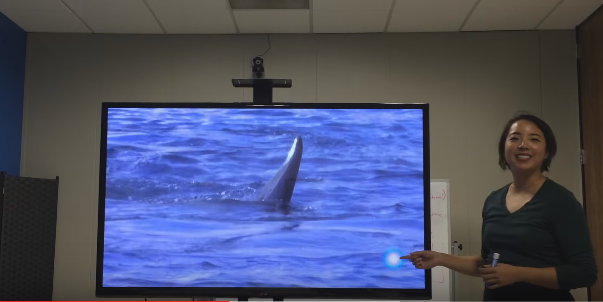Netflix Is Now Safe For PTSD Sufferers, Thanks To This Trigger-Warning App

It puts power back in survivors’ hands.
In 1968, the Motion Picture Association of American unveiled its movie rating system (you know, the reason you couldn’t see the R-rated “American Wedding” in theaters with your 17-year-old friends). In 1998, TV got an advisory system, too, when the FCC approved TV Parental Ratings (it’s thanks to them that you can avoid accidentally watching racy scenes with your parents). In 2016, a new start-up developed an advisory system for Netflix, designed to help people who’ve experienced trauma to avoid potential triggers.
Wait — what’s a trigger warning?
A trigger warning is a heads-up before a piece of content is shared — movie, novel, TV show, classroom discussion — that there’s potentially distressing material within. It’s a way to empower individuals who have experienced related traumas — like sexual assault survivors, hate crime survivors and war veterans—so they can manage their triggered, emotional responses. Depending on the person, managing that response might mean breathing exercises, popping an anti-anxiety pill or opting out of consuming the content altogether.
Right now, there’s a national discussion about trigger warnings’ role in classrooms. Critics of trigger warnings view them as a new phenomenon designed to baby a politically-correct generation and build a culture in which offending someone is the ultimate crime. Supporters say they’re a new name for a thing that’s existed for decades. Kate Manne, an assistant professor of philosophy at Cornell wrote in The New York Times, “It’s not about coddling anyone. It’s about enabling everyone’s rational engagement.” If a student has a PTSD flashback while discussing a topic, no one wins.
In the classroom, you want everyone to be able to participate in a discussion. On your couch with Netflix streaming, you want to be able to enjoy yourself. That’s where Feerless comes in.
Feerless: the brilliant little blue orb

Feerless is a free Google Chrome plug-in that alerts Netflix viewers when a scene that could trigger them is coming up. Created by Danielle Leong, a 28-year old entrepreneur and sexual assault survivor, Feerless was born out of an experience she had watching “Sons of Anarchy.”
“There was a scene where one of the main characters was gang raped,” Leong told Fusion. “I have PTSD from a sexual assault and the scene triggered me very badly — I ended up losing about three days of my life. When I came out of the fog, I remember thinking, ‘If I had known that was coming, I wouldn’t have watched it.’ But there just weren’t trigger warnings for TV shows like that.”
She built the app herself, and it’s brilliant in its simplicity. Once you add it to your Google Chrome browser and select your triggers, a little blue orb appears in the corner of your screen when a potentially triggering experience is about to occur.
How Feerless wins
Feerless is an incredible improvement over traditional ratings systems for a few reasons:
Warnings are personalized. Feerless organizes possible triggers into 13 categories, including gore, self-harm, sex, animal abuse, domestic abuse and eating disorders. When users sign up, they personalize the warnings they’d like to receive, which is unlike vague “mature audiences” warnings, which only broadly categorize violence, sex and drug use.
Warnings are immediate. Traditional movie and TV ratings systems provide upfront assessments of the film or show, but they don’t alert you to specific moments when triggering sequences will occur. Feerless’s subtle blue orb appears immediately before a specific moment within the TV show or film. This allows those with triggers to not miss out on their favorite shows altogether, but know specific moments when they’ll need to manage their response.
“I saw this need in the mental health community,” Leong continued. “I looked around the marketplace, and I just didn’t see that much out there for people like me, people with PTSD. The more diversity of people we have in the industry, the better our products will be, and the more we can help our users.”
Feerless’ blue orb only appears when another user has flagged the scene, so the app will have to grow to benefit from the “network effect.” That’s when the value of a service depends on how many people (“the network”) are using it. So the more people who download Feerless and use it to flag and categorize Netflix’s shows, the more valuable it will be. Right now, Feerless is only available on Netflix, though it has ambitions to cover all streaming services.
Whether or not Feerless succeeds as a business remains to be seen, but it’s an incredibly unique and innovative service. As we start to better understand triggered responses and the role of trigger warnings, Feerless uses technology to help people navigate their favorite shows online. Hopefully, it will catch the attention of streaming services, who could buy the app or build a similar feature into their services.
